No products in the cart.
The Most Important Position
At the heart of every tremendous mountain biking trick you’ve ever seen on the trail, in that sick edit, or read about in a magazine is one common theme: The Ready Position.
If good riding is a house, then the Ready Position — or “Ninja” position, as we’re fond of calling it — is the foundation. Every other skill is built around this one seemingly straight-forward thing. So let’s break it down, from bottom to top.
1. Even Weight on Your Feet
Make sure you have equal weight on your pedals. Whether climbing, descending, or just plain riding along, if you were to put a scale under each of your pedals, the weight should come out equal.
2. Knees Bent and Out
Keep your knees bent to allow the bike to move up and down under you — basically, your legs are your suspension. Your bike moves up and down beneath you and it also needs space to move side to side, as it does if you were leaning in a corner. With your knees out, you can lean the bike that much farther; the other way and you can’t lean it at all.
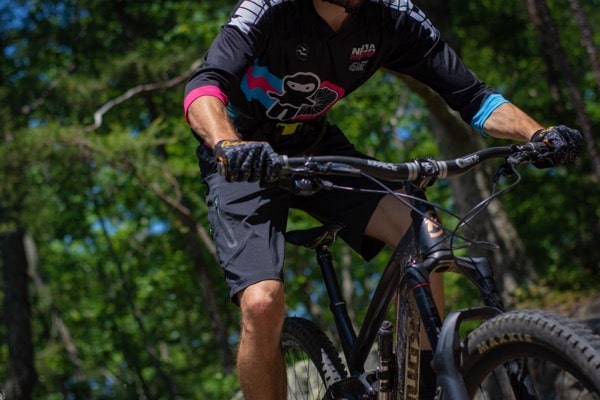
3. Bum Off The Saddle
The only way your big, beautiful suspension system (your legs) can work is if it’s open and active. Putting your bum on the seat effectively means you’re “locked out.” To keep up with varying terrain, and to work the bike, you’re going to need your bum out of the saddle.
4. Torso Down
The lower your torso, the lower your center of mass, and the more stable you’ll become. Lowering your torso also makes room for your arms to lean the bike into ever-tighter corners. If things start to get squirrely, we’re betting it’s your torso that’s crept up on you.
5. Elbows Bent and Out
You’re much stronger with your elbows out, rather than in. Don’t believe us? Try doing pushups — two with your elbows out, two with your elbows in. With them out, you get to use biceps, triceps, chest, and back to support your riding and share the load. With them in, you have only your triceps to work with. Bending your elbows also helps protect your space, and you’ll get more extension in cornering, too.
6. One Finger on the Brake
Part of being “ready” is being ready to stop. On the trail, whether uphill or downhill, things can change very suddenly so having your index finger on the brake, ready for action is a must. But thanks to the power of modern brakes, you only need one. Save your other three fingers to maintain a good grip on your handlebars.
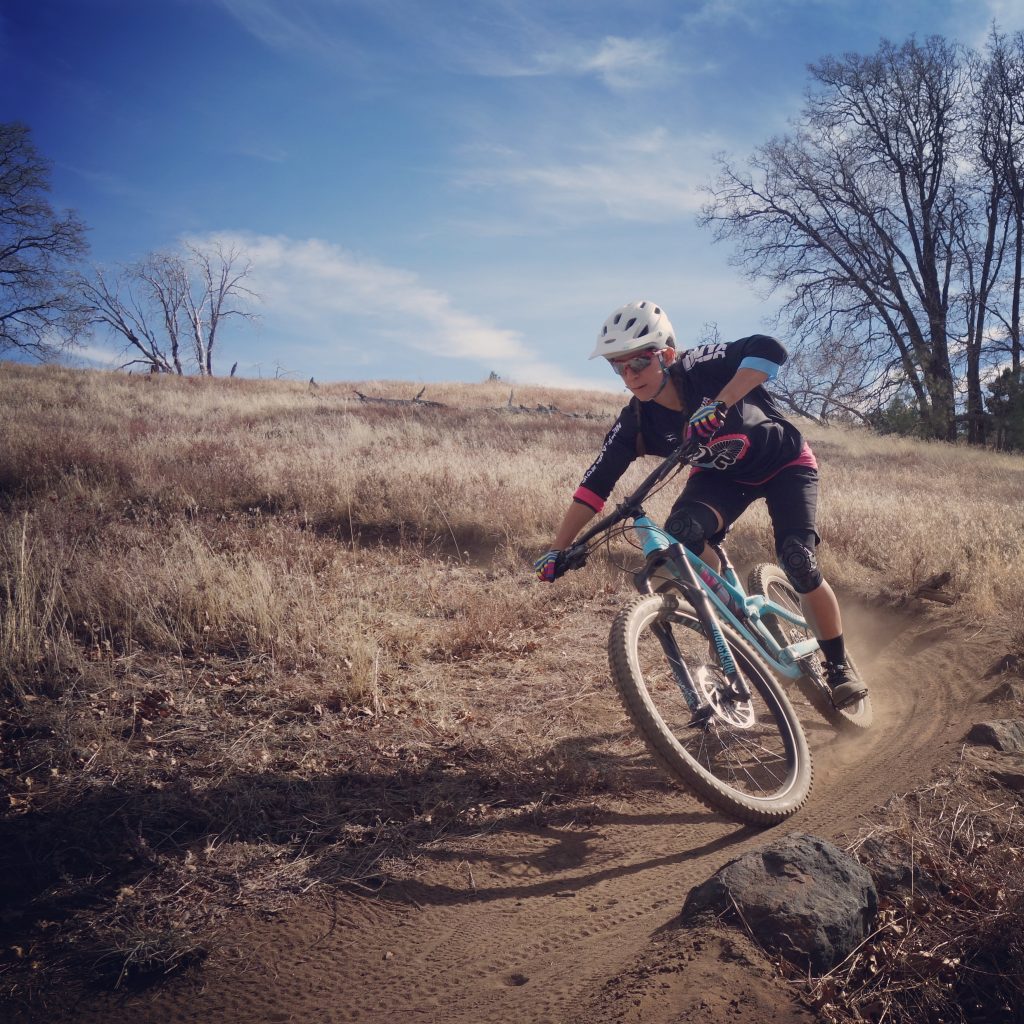
7. Head Up
“Look where you want to go,” is some of the oldest advice in mountain biking. Also its companion piece, “don’t look where you don’t want to go.” With your head up, you’ll be able to see where you’re going. We recommend keeping your head up and looking down the trail while making quick scans to what is immediately in front of you. It’s too late to do much about the obstacles under your wheels. Looking — and thinking – ahead are key to flowing down the trail.
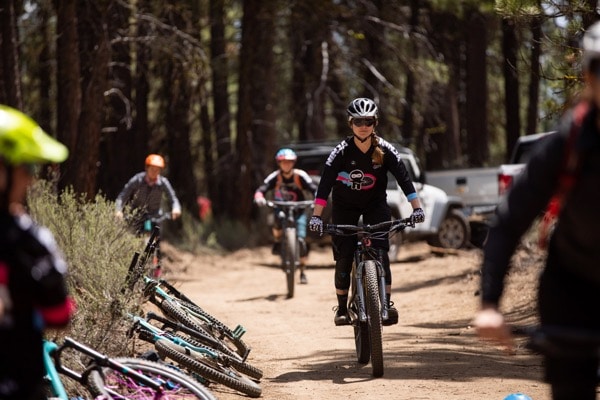


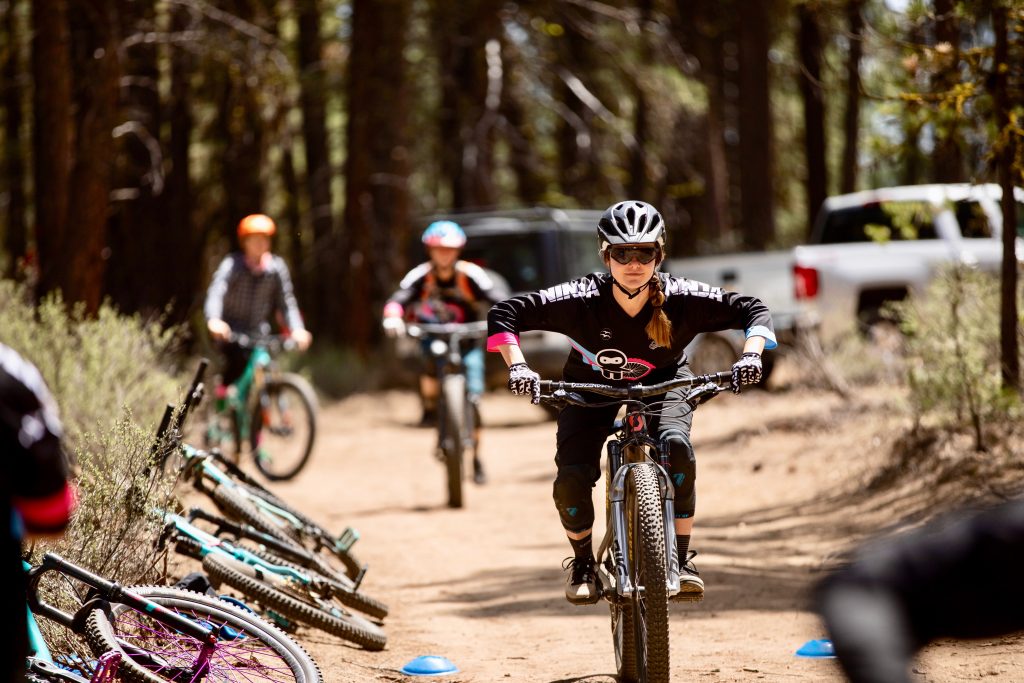
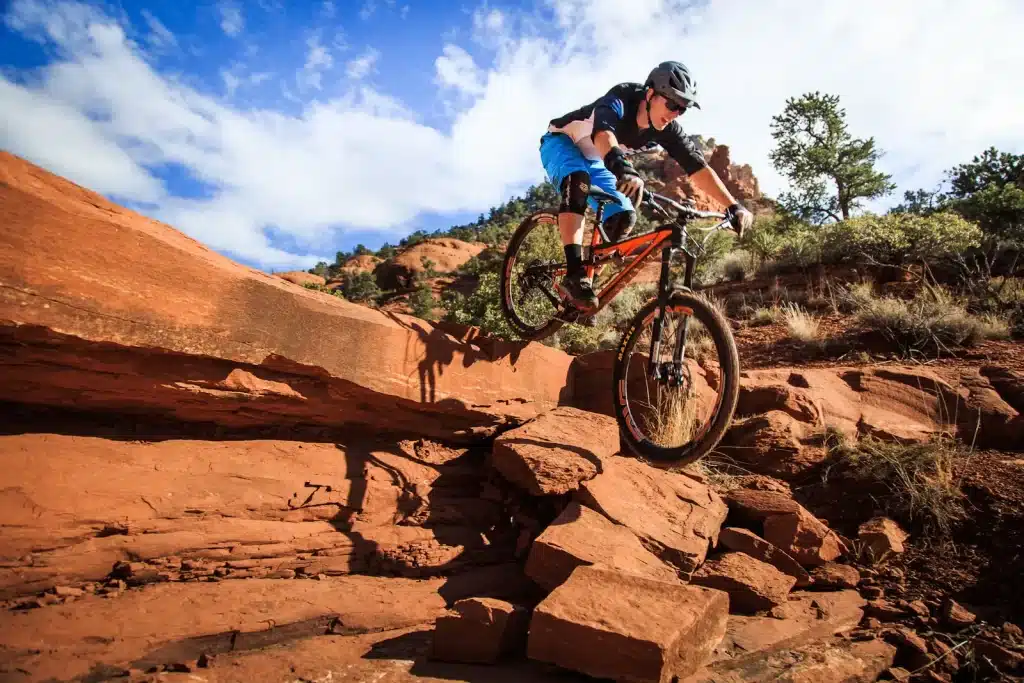
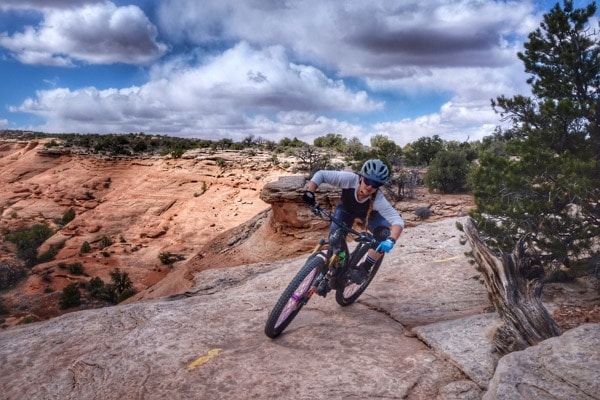


I have the hardest time keeping the finger on the brake lever.
I even have the reach adjusted, my preference is to let em run and brake as late as possible.
Launching and manuals seem to flow better too. It took a long time getting accustomed to not using the brakes all the time on descents. Like skiing, there are counter-intuitive techniques and letting them run is not what a sane person does.
i admit it. i am a so called “brake hog” i love to use the brakes to adjust my speed whenever going down hill but is mostly do to my fear of running into another rider. i will try to practice with this. thanks for the tip
With bikes evolving with slacker and slacker head angles, the ‘ready position’ seems to have also evolved with more elbow bend, to get the torso more over the front wheel. This seems to help with front wheel washouts. I also seem to like a stem one size longer and a seat slid forward the same amount. Some newer bike designs, like the new Ripley 4, are steepening the seat angle and lengthening the top tube [even more] to help the front tire bite better and also aid climbing.
One more comment about extreme elbows out – makes it more difficult to prevent the shoulders from rolling forward. If you’ve ever had rotator cuff issues, this will resonate…